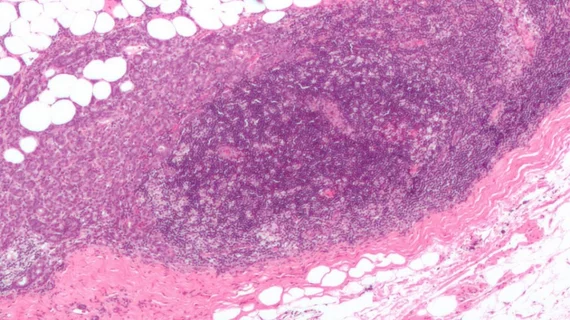Short-interval follow-up MRI helps ID early stage breast cancer
Short-interval follow-up MRI can identify early stage breast cancer and reduce unnecessary biopsies, reported authors of a study to be presented at the American Roentgen Ray Society (ARRS) Annual Meeting in Honolulu.
Co-researcher Christine Edmonds, MD, of the department of radiology at Massachusetts General Hospital (MGH) and colleagues analyzed the frequency and cancer yield of American College of Radiology (ACR) Breast Imaging Reporting and Data System (BI-RADS) 3 lesions in patients who received baseline and non-baseline screening MRIs. The team defined non-baseline as those preceded by at least one screening exam.
More than 6,600 exams from 3,214 patients were included, 202 (3%) of which were tagged as BI-RADS 3. Broken down, 8.3% of baseline MRIs were designated BI-RADS 3 compared to 2.1% of non-baseline exams.
A total of 13 (6.4%) BI-RADS 3 lesions were malignant and 12 of the 13 cancers were considered stage 0 or 1. In the 82 baseline exams, BI-RADS 3 yielded 2 (2.4%) cancers compared to 11 of 120 (9.2%) in the non-baseline exams. Ten of the 13 diagnosed cancers were upgraded at six month follow-up MRI or before, the authors noted.
“This study clarifies that probably benign assessments can be as useful for MRI as they are for mammography,” said co-author Leslie Lamb, MD, MSc, of MGH and Harvard Medical School, both in Boston, in a news release.
Although many express uncertainty with regards to BI-RADS 3 in MRI, the authors believe their results prove the method can help diagnose breast cancer earlier.
“Many patients and providers question the utility of BI-RADS 3 in MRI, particularly as some insurers do not cover the costs of the short interval follow-up MRIs,” said co-author, Christine Edmonds, MD, of the department of radiology at MGH. “This study clarifies that short interval follow-up MRI is a valuable method of identifying early stage breast cancer while avoiding unnecessary biopsies.”

